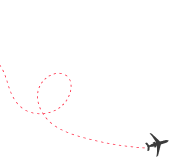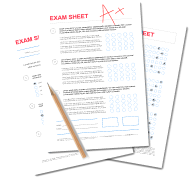Decode the IELTSExam Pattern of 2025
There are 4 sections in IELTS: Listening, Writing, Speaking & Reading
The duration of IELTS exam is 2 hour 45 minutes.

Introduction
The IELTS exam pattern of 2025 includes four sections: Listening, Reading, Writing, and Speaking. Candidates need to prove themselves on these four skills and then they are given an IELTS band score. However, there are different types of questions in each section of the IELTS Exam. Thus, students need to understand the pattern of the IELTS exam before appearing for the main test. So now let’s discuss in detail the IELTS exam pattern of each section and its question types.


IELTS Exam Pattern for Academic & General Test
There are two types of IELTS tests available, IELTS Academic and IELTS General Training Test. Both the tests are classified exactly in the same way. You will appear for the first three sections of the test on the same day, in the following sequence: Listening, Reading, and Writing (there are no gaps between these sections). However, your speaking test will be held either on the same day or seven days after depending on the dates and arrangements. Now let’s have a look at the table and understand the IELTS Academic test format as well as the General Training Test format.
IELTS Test Module
Academic IELTS
General Training IELTS
Time Allotted
Listening
4 Recordings 40 Questions
4 Recordings 40 Questions
30 Minutes
Reading
3 Passages 40 Questions
Multiple Texts 40 Questions
60 Minutes
Writing
Task 1 - Describe visual information , Task 2 - Writing an Essay
Task 1 - write a letter, Task 2 - Write a Essay
60 Minutes
Speaking
Part 1: Introduction, Part 2: Cue Card, Part 3: Further Discussions
Part 1: Background, Part 2: Cue Card, Part 3: Further Discussions
11-14 Minutes
IELTS Listening Section
The IELTS listening test is designed to evaluate a candidate’s listening abilities. The exam pattern in this section is the same for both the IELTS Academic and General Training tests. It consists of four sections, each with 1 recording. There are ten questions in each recording. You can hear the recording only once. Now let’s look at the table and find out about the IELTS Listening test format for 2025 in detail.
IELTS Listening Test Format
Let’s have a better understanding of the IELTS test format of the listening section in detail through the given list.
- Time allotted: Approximately 30 minutes (plus 10 minutes to transfer your answers to an answer sheet)
- Number of Parts or Recordings: 4 parts or recordings
- Number of Questions: 40
- Types of Recording:
- Recording 1: Conversation between two people set in an everyday social context
- Recording 2: A monologue set in an everybody social context, ex a speech on child labour
- Recording 3: A conversation between up to 4 people in an educational or training context, ex Indian universities vs Foreign universities
- Recording 4: A monologue on an academic subject, ex a university lecture
-
Marking Criteria: Each right answer gets a 1 mark. Your final score will be given as a band score in whole or half bands, ex 5.5 or 7.0
IELTS Listening Question Types
In the above section, we discussed the IELTS listening test format. Now let’s discuss the different types of questions that you can face in the IELTS listening section in 2025.
- Multiple Choice: These questions can be answered with one correct answer or more than one answer. Students must read the question carefully to check how many answers are needed.
- Matching: In this type of question, there will be a list of options given on the question paper. You need to match these options with the list of items in the recording. Then you have to write the correct letter (A, B, C, or D) on the answer sheet.
- Plan, Map, Diagram Labelling: You will need to complete the labels on a plan (ex of a mall), map (ex a part of your village) or diagram (ex a piece of equipment.) Students can select the answers from a given list in the question paper.
- Form, Note, Table, Flow-Chart, Summary Completion: This question type, comes in the form, table, flowchart, note, or summary in context with the recording. You need to fill the gaps either from a list of options or identify them from the recording.
- Sentence Completion: There will be a set of statements that summarize the important information in the recording. You need to fill the gap in each sentence using the information provided in the recording. Read the instructions carefully before writing down the answers.
- Short Answers: In this type of question, you need to read the given question and answer it shortly with the help of the information given in the recording. Further, you can also asked to write down two or three different answers to the same question.
Overall, this is the IELTS exam question pattern for the listening section. Now let’s discuss the reading section of the IELTS Exam.

 Access Listening Mock Test
Access Listening Mock Test IELTS Reading Section
IELTS exam pattern for the reading section is designed to assess a variety of reading skills, for both Academic and General Training. There are three sections, and you will get around 60 minutes to answer 40 questions in total. However, the writing style is different for each text. Now let’s understand the IELTS reading test format in detail through the given table.
IELTS Reading Test Format
In the IELTS reading section, the texts come from books, journals, magazines, newspapers, and online resources. Further, let’s discuss the IELTS reading test format for 2025 in detail.
- Time allotted: 60 Minutes
- Number of Parts or Recordings: 3; the total text length is 2150- 2750 words
- Number of Questions: 40
- Types of Recording:
- Section 1: It consists of two or more short texts that includes factual information.
- Section 2: It consists of two texts of more difficult language.
- Section 3: It consists of a very long text that is generally most difficult in all of three
- Marking Criteria: Each right answer gets 1 mark. Final score will be given from 1-9 in whole or half bands that is 4 or 6.5
IELTS Reading Question Types
In this section, we will discuss the different types of IELTS reading questions that you can face in the exam.
- Matching Headings: In this type of question, you need to read the paragraphs carefully and choose the best heading for each of them. Understand the main ideas, supporting ideas and how they differ from each other.
- Matching Paragraph Information: This question will consist a list of statements. You need to choose the statement that best suits the content of the reading.
- Matching Features: In this question, you need to read the paragraphs, and then see the list of statements with the information given. And based on your reading you need to match the views of the researchers.
- Matching Sentence Endings: This question includes two lists of statements. The first list has incomplete sentences, while the others are different sentences. You need to match the incomplete sentences with other sentences.
- True/False/Not Given: There will be a list of statements and you need to match the specific statement stating whether it is true, false, or not given.
- Multiple Choice: There will be questions and four options will be given. You need to choose the right option for the given question.
- List of Options: This question is almost same as the multiple choice, but you will be asked to choose the most correct answer.
- Choose a Title: In this type of question, you need to select the best title from the list. You will be given a reading, then asked to choose the most right title.
- Short Answers: In this type of question, you need to write the answers in detail.
- Sentence Completion: There will be set of sentences and you need to complete the blanks that are not completed based on the reading.
- Summary Completion: The specific part from the passage will be given in the form of summary and you need to complete it with the required answers.
- Table Completion: In this type of question, you will get a table and some missing pieces of information. You need to fill in those blanks with the right information.
- Flow Chart Completion: This is also similar to the table completion, as there will be missing gaps but in the form of a flow chart.
- Completion Diagrams: You need to fill in the missing information in the required diagram.
These are the question types for IELTS reading section. Now our next section talks about the writing section of IELTS Exam.

 Take Reading Mock Test Now!
Take Reading Mock Test Now! IELTS Writing Section
The IELTS exam pattern for the writing section is designed to test your writing abilities through two tasks, Letter Writing/Graph Writing and Essay Writing. These types of questions assess grammar, fluency, accuracy, task response, and more. You must write your answers in the full sentences. Now let’s discuss the format of the writing section in detail.
IELTS Writing Test Format
The IELTS writing section consists of two tasks of 150 words and 250 words. For a better understanding look at the table given below and know the IELTS writing test format for 2025 in detail.
- Time allotted: 60 Minutes
- Number of Questions:3
- Types of Tasks:
- Task 1:Describing the data / Write a letter
- Task 2: Writing an essay
- Marking Criteria:Task 2 contributes twice as much as Task 1 to the writing score.
IELTS Writing Question Types
In this section, we will discuss the types of questions for the writing section in detail. Let’s have a look:
IELTS Academic and General Writing Task 1: Task 1 in Academic Test includes some visual information or data in the form of a Graph, Table, Chart, or diagram. You need to describe or summarize the information in your own words.
Whereas in general training test you are presented with a situation and you need to respond it in the form of a formal or informal letter. You need to write at least 150 words within a time span of 20 minutes whether it’s Academic or General
IELTS Academic and General Writing Task 2: Task 2 is the same for both Academic and General Training. However, in this task, you will be given a point of view, argument, or problem. The topics can be related to education, environment, lifestyle, and more. You need to write an essay in 250 words in time span of 40 minutes.
This is the IELTS paper pattern for the writing section. In the next and final section, we will discuss the speaking section of the IELTS Exam.
 Take Writing Mock Test Now!
Take Writing Mock Test Now! 
IELTS Speaking Section
The speaking section is conducted after you are done with all the other three sections. It is a face-to-face interview between the test taker and an examiner. The speaking section evaluates a candidate’s speaking ability. Further, let’s discuss the IELTS test format of the speaking part.
IELTS Speaking Test Format
The speaking section has three parts and each part has a specific objective. To gain a better understanding, Let’s understand the IELTS speaking test format for 2025 with the help of the given table.
- Time allotted: 11-14 Minutes
- Number of Questions:3
- Types of Tasks:
- Part 1:Introduction Round
- Part 2: Cue Card Round
- Part 3: Discussion Round
- Marking Criteria:Assess your performance on four areas Fluency and coherence, lexical resources, grammatical range and accuracy, and pronunciation.
IELTS Speaking Question Types
This section will let you know about the IELTS paper pattern for the speaking section. Also, you will find the different types of questions you can encounter in the exam.
- IELTS Speaking Part 1: It includes the introductory questions about yourself, interests, likes & dislikes, and family. For example, what is your name or what are your hobbies?
- IELTS Speaking Part 2: Part 2 is the cue card round, in which you will be given a topic on which you need to speak for 2 minutes. For example, Describe a Time You Were Very Busy.
- IELTS Speaking Part 3: Part 3 is the discussion round. An examiner will ask you some follow-up questions related to your topic in part 2. For example, what are the pros and cons of being busy?

 Access speaking Mock Test
Access speaking Mock Test Conclusion
To conclude, as we have discussed above the IELTS exam pattern 2025, which has always been a concern for the test takers. Further, this write-up has given you an in-depth detail of each section of the IELTS Exam along with its different question types. Still, if you are facing issues in understanding the IELTS exam pattern then we are here for you. Connect with our experts at Gradding.com and receive the best assistance and guidance.
Buy Mock Test Package and get Flat 50% OFF
Reach the Desired Scores and Stand on Top with the Best Guidance. Talk to Experts for ielts Counselling!

Predict Your IELTS Band Score forFree with our Band Predictor Tool!
![]() Analyze Your Module-wise Preparation
Analyze Your Module-wise Preparation
![]() 100+ Mock Tests by Expert IELTS Faculty
100+ Mock Tests by Expert IELTS Faculty
Frequently Asked Questions
The format of the IELTS exam 2024 is the same as it was in previous years. It is divided into four sections: Speaking, Reading, Writing, and Listening. Each section evaluates the candidate's abilities in each of these areas.
There is no pass or fail in IELTS. You are marked on the basis of your performance in the test using band scores varying from 1-9. Also min. score required varies from organization or institutes you are applying for. However 6.0 to 6.5 is considered as the min. passing marks for most organizations
Yes, the questions comes in the same order as the information given in the passage, i.e. The answer of the first question will be found before the answer of the second question.
Well, all these accents are acceptable in the IELTS test. You can pick one from Australian, British or American English, and excel in IELTS Exam. However, it is important to stay consistent, when writing the words.
In both IELTS Academic Test Format and General Training, the speaking and listening sections are the same. However, the reading and writing sections differ. They are designed to assess the language ability which is more relevant for each section.

Claim free IELTS Classes now!
We will help you secure admission in Top Universities Abroad with Completely FREE IELTS Coaching
Take Mock Test to Explore IELTS Exam Pattern
Start IELTS Mock Test
![IELTS Reading List Completion [Types, Tips & Samples]](/test-preparation/_next/image?url=https%3A%2F%2Fgradding.s3.ap-south-1.amazonaws.com%2Fwebsite-images%2Fuploads%2Fpages%2Fcopy-of-ielts-reading-list-completion-types-samples-67e1.png&w=828&q=75)




